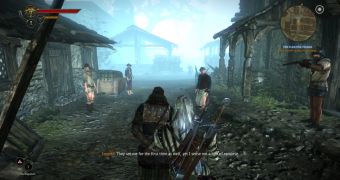The Witcher 2 is one of the few games in the last couple of years that have managed to really take a world, populate it with characters and then breathe life into it, making it engaging and appealing beyond the inherent limitations of the video game as a medium.
The Witcher 2 cannot escape from being compared to Dragon Age 2, the role-playing game that BioWare put out earlier in the year, even if the two games do not really inhabit the same gaming space, and when it comes to world building the developers at CD Projekt RED manage to come out way ahead.
Where Dragon Age 2 felt artificial, with the unrecruitable characters often standing all day in the same spot ready for conversation, but only if it directly concerned the quest line associated with it, The Witcher 2 creates towns that are smaller but more focused, with a number of inhabitants who are going around doing their daily business in a more organic way.
In Flotsam the developers have created the illusion of a living town, with people that actually have stuff to do and won't even bother talking to Geralt and with main characters that have their own personality, working out of sight to advance their own agendas.
The sense of place is much helped by the unique art style of the game, which aims for a sort of faux realism where Dragon Age 2 tried to stylize, and by the ability of the new game engine to mix light, color and darkness in order to deliver at-times-beautiful vistas.
The world created by The Witcher 2 is good enough that I often feel bad about spending so little time in it, a few days that define the fate of one part of it.
Maybe for the next Witcher CD Projekt RED might think about creating a multi-year story like their rivals at BioWare did, just to give players more time to see their universe and explore it.

 14 DAY TRIAL //
14 DAY TRIAL //